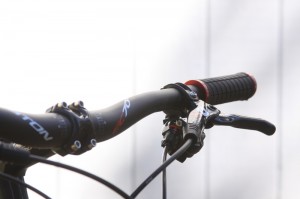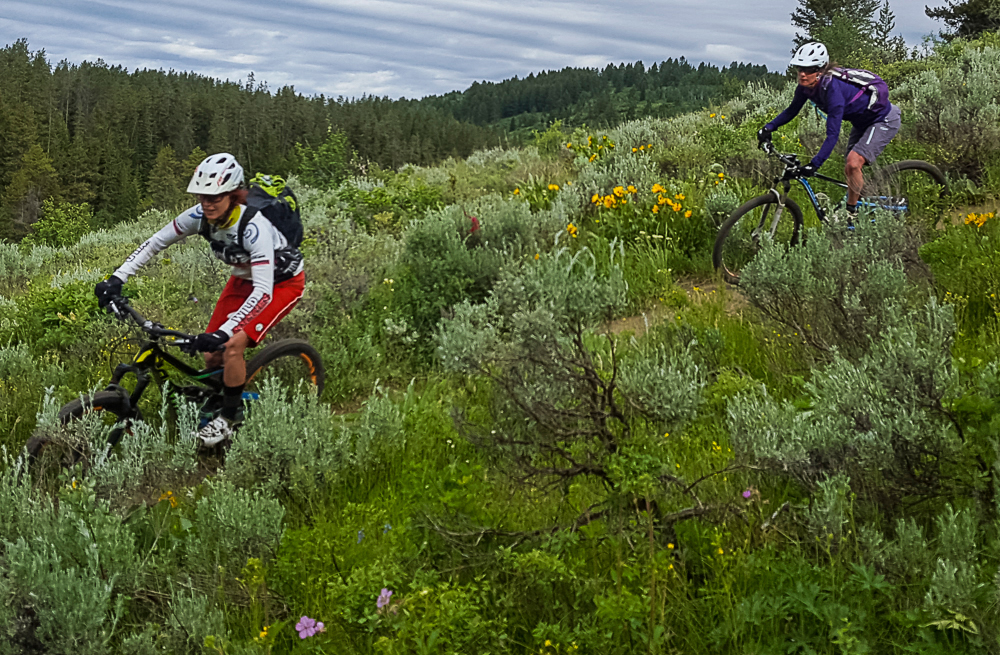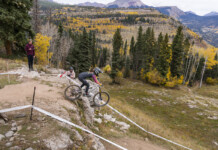
By Chris Magerl
Looking to have more fun, more control, more speed on your mountain bike? Don’t get stuck with a narrow mindset. Think wide, as in wider handlebars.
When things are getting hairy on the trail, you are in touch with two parts of your bike: the pedals and the bars. The type of bar is going to play a big role in whether you get through that gnar section feeling like you are railing it as opposed to feeling like you are about to eat it.
Mountain bikes have evolved quite a bit on the past ten years. The brakes, shifting and suspension are in a different league compared with the early 2000’s. But it is not unusual to see someone on a mostly modern bike tooling around with narrow bars. There has been a dramatic change in bar-width over the past decade, and few riders who have made the change are willing to go back to their narrow ways.
If you were to look at the start line at a mountain bike World Cup six years ago, you would have seen many very narrow, flat handlebars. At the time it was not uncommon for racers to ask their mechanic to saw a few inches off the bar to make it even narrower than the factory spec.
Look at a start line now and you will see a variety of flat and riser bars, often based on the wheel size (more on this later). But you will almost never see a narrow bar.
As cross country riders were exposed to wider bars by spending a bit of training time on downhill bikes, dirt jumpers or motorcycles, they came to find that the wider bars gave them greater leverage while climbing, opened up their chest to create a feeling of less lung restriction and allowed for more control while descending. Some pros heard snickers for lining up in a pro XC race with a wide riser bar, bucking the racer fashion. Then they smoked those laughing riders. Wide bars became a bit more prevalent.
Kelli Emmett of the Giant Factory Off-Road Team was one of those early adopters. “I’ve gotten used to the wider bars from riding motos and more long travel bikes over the years.” Emmett is one of the best descenders in the cross-country world, having won Super-D national championships in 2006, 2010 and 2012. She was also the Single Speed World Champ in 2007.
Emmett finds a lot of positives in the wider bar. “I’ve left it at 700mm since I’ve really come to enjoy a wider bar these days. Increase stability while descending. It helps to keep the front end more stable. I feel like I can push down on the inside of the corner for higher speed corner and gain more leverage while climbing. Also, while riding steep sections, riser bars feel safer since it puts more of my weight over the back of the bike which helps to keep the rear wheel down and not feel like I will flip over the bars.”
Wide bars offer a leverage boost. Single speed riders need all the boost they can get to keep momentum going. Heather Holmes, the 2011 Single Speed World Champ, is a fan of the wide bar. “Climbing out of the saddle was a lot easier and I felt like I had more control in regard to the bike handling.”
“When I switched I noticed that I liked the wider bars because there were more places to put my hands and I could change my position based on what I was doing or how I felt. I also noticed that climbing out of the saddle was a lot easier and I felt like I had more control in regard to the bike handling. I hadn’t even thought of going back to narrow bars until I moved to Atlanta four months ago. There are lots of narrow trees around here so most people still ride the narrow bars, but so far I’ve been able to make it work with my wide bars without too many falls!”
Bar manufacturers have seen consumers’ interests change, driven in part by the advent of more 29er bikes. But even on a 26 inch wheel, wider equals fun.
“More control and leverage are key with a wider bar,” says Angelo DiGiovine, Marketing Manager for Ritchey Designs USA. “Long travel suspension has increased the speeds at which riders attack technical sections. Flat bars are still common with 29er frames, and here again we’re seeing wider bars help by increasing leverage over the bigger wheels when turning.
Jake Pantone, Marketing Manager for Enve Composites in Ogden, agrees. “It was hard to drive a 29er and corner on one using a 24” wide flat bar with no sweep. So, the natural progression in our mind was to create a bar that has the features of the classic riser, 9 degree sweep, and just take the rise feature out of it. The ENVE Sweep bar was born and the traditional flat bar died. We literally couldn’t give one away.”
Emmett urges riders to try wide. “I say make the change and you’ll love the way your bike handles with wider bars. If you don’t like the way it handles, you can always cut them back to your original size.”











